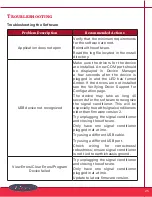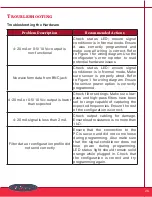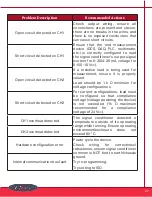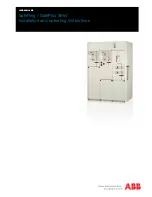
13
In the configuration tab are the configuration settings for the unit . The “Input
Sensitivity” and “Input Units” dropdown menus define the sensor connected to
the signal conditioner . Input Sensitivity refers to the sensor’s sensitivity, and the
input unit refers to the sensor’s measurement type (g’s for acceleration, IPS and
mm/s for velocity, and mils for displacement) . In Figure 3, the signal conditioner
is configured to accept input from a 100 mV/g accelerometer . It is essential
that this correctly matches the sensor type used to ensure proper scaling and
accurate calculations . The software will allow you to use combinations of input
sensitivity and input units that do not currently exist as sensors . If you do this,
the software will alert you that the “Part number is invalid or the software is out
of date . Config can still be applied” and produce a part number with a space in it .
The “IEPE Power” dropdown menu controls whether or not the built-in IEPE
supply on the device is enabled or disabled . In Figure 3, the IEPE power supply
is configured to “ENABLED,” so once configured and plugged in, the signal
conditioner will supply a constant 4 mA to the sensor . The sensor input and thus
settings described above are shared by both channels . Below, the “IEPE Power”
dropdown menu is where each channel’s scaling settings are configured . For the
SC310 series, only Channel 1 will be available to edit .
“Full-Scale Range” corresponds to the dynamic range of the measurement and,
combined with “Output Units,” make up the scaling for the output control signal .
The maximum selectable full-scale range is dependent on the sensor sensitivity .
For more information, please visit
https://documents.ctconline.com/archive/full-
scale-range-limitations
. The output unit selections are the same as the input unit
selections and depend on the sensor type . The output unit can either be straight
through or integrated . In a straight-through configuration, the output unit matches
the sensor input unit (e .g ., g’s in and g’s out) . In an integrated configuration, the
output is integrated and then measured (e .g ., an accelerometer signal in g’s can
be integrated to measure velocity in either IPS or mm/s) . Conversion can also
take place between mm/s and IPS . The “Measurement Type” describes how the
signal conditioner measures the sensor signal for scaling calculations . This can
be either peak, peak to peak, or RMS, peak hold .
For example, the input sensor in Figure 3 is 100 mV/g, the full-scale range is
0-2 with a unit of g’s, and the measurement type is peak . Therefore, a midscale
condition will occur when the sensor outputs a signal corresponding to 1 g peak
(halfway between 0 g and 2 g) . If the measurement type were RMS instead, a
mid-scale condition would occur if the RMS of the sensor signal was equal to 1
g (a peak value of 1 .414 g) . If the signal was integrated and the output unit was
IPS, a mid-scale condition would occur if the sensor were outputting a signal
corresponding to 1 IPS after integration .














































